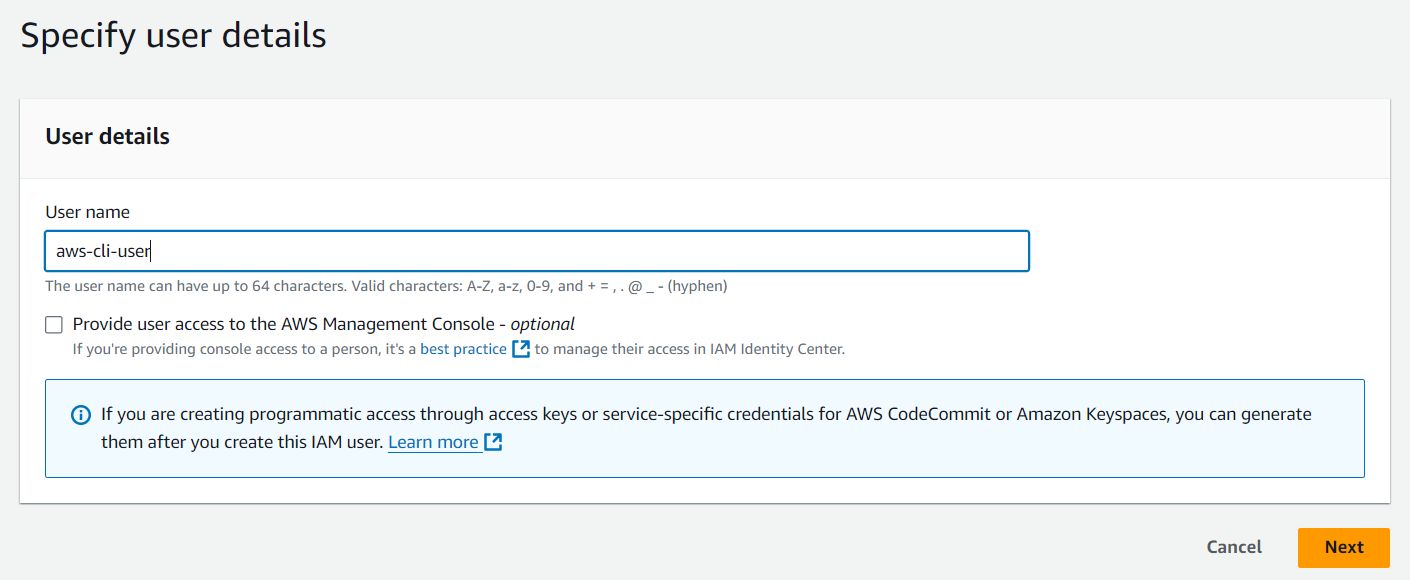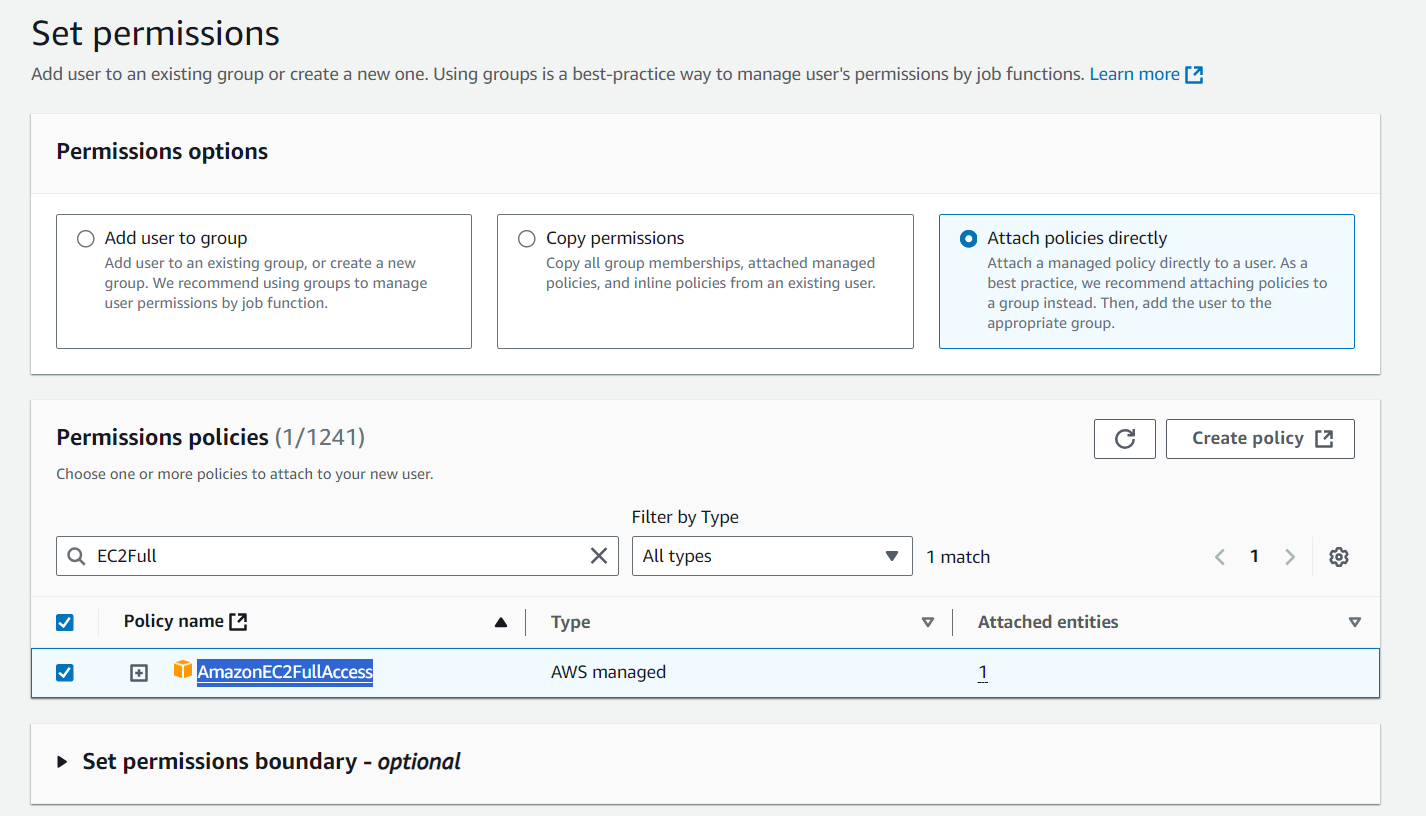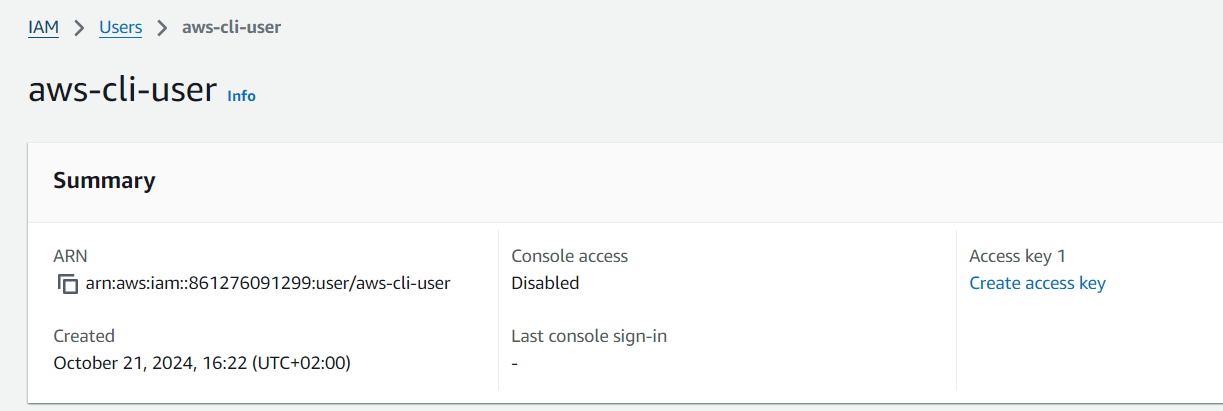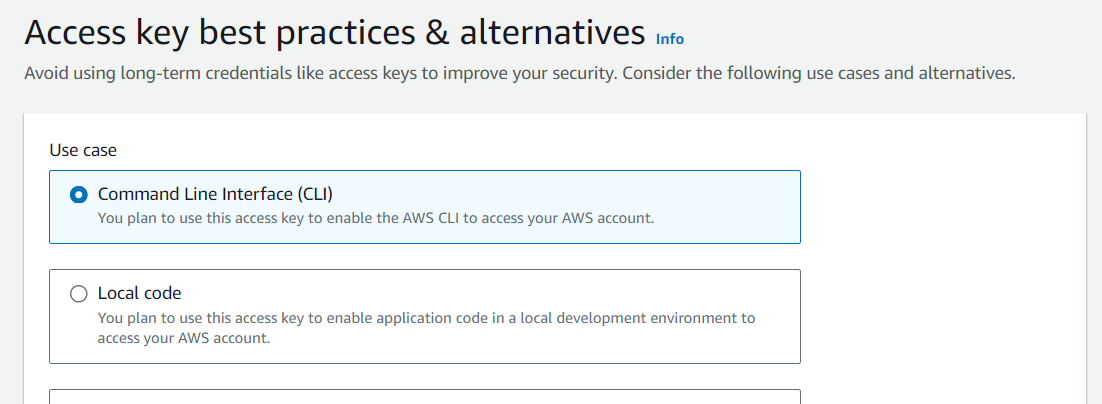AWS CLI is a powerful command-line tool that allows you to manage AWS services from your terminal. After installing it on your machine, you will also need an AWS user with the proper permissions to interact with AWS resources
In this article, we’ll walk through how to set up a user for AWS CLI, which will be used in subsequent articles.
Create a user
Log in to your AWS Management Console. In the search bar at the top, type IAM and select it from the search results. In the IAM dashboard, select Users from the left-hand menu. On Users page click Create User.
Let’s use aws-cli-user as the username, and click Next
On the next screen, choose Attach policies directly. Search for the policy named AmazonEC2FullAccess, select it and click Next.
Note! Here we give the user full access on EC2 for the sake of simplicity. In a real-world scenario, it’s recommended to assign more granular permissions based on the user’s specific tasks.
On the review page, confirm the details. If everything looks correct, click Create user. The new user will now appear on Users page.
Create an access key
An access key is a set of credentials that allows the AWS CLI to authenticate on behalf of your user. Let’s create it! Open the user screen by clicking on the username, and then click Create access key
On Access key best practices & alternatives page select Command Line Interface (CLI) as the intended use, and click Next.
Then click Create access key.
Note down the access key, secret access key, as well as the region where you want to create an instance. Important: Treat these credentials securely. Do not share or expose them publicly.
Configure AWS CLI
Now that you have the access keys, you can configure the AWS CLI to use this new user. Run the CLI configuration command.
1
aws configure
When asked, enter the access key, secret key and region. The output format can be json.
Verify the setup
To confirm that the AWS CLI is working and that your user has the necessary permissions, run the following command:
1
aws ec2 describe-instances
You should see instance data in json format. If this is the case, and no errors in the response, then AWS CLI is ready for work! Well done!






